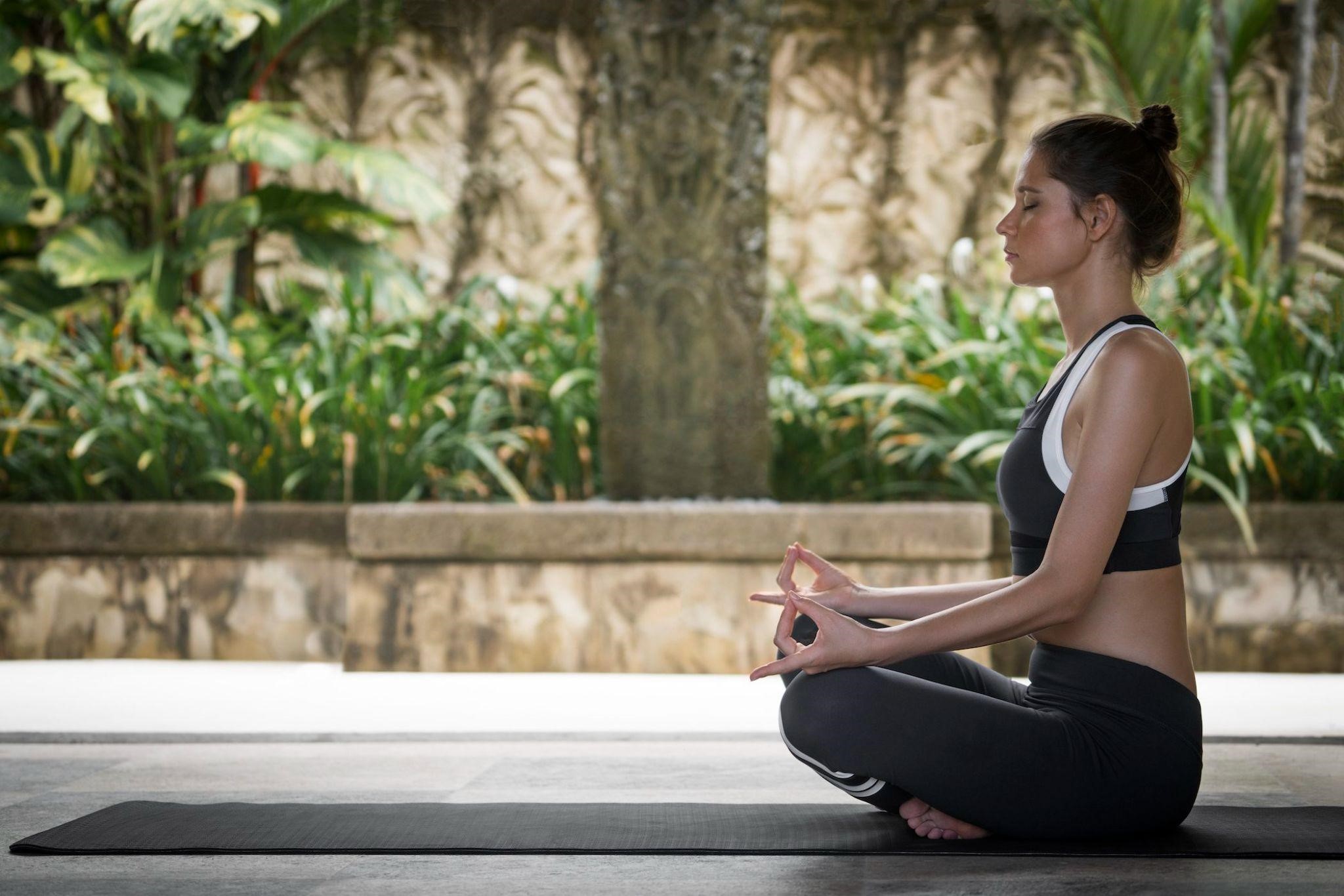Yoga for Beginners: A Beginner's Guide

Introduction
Yoga is one of the oldest disciplines of human practice, refined over 5 thousand years as a means to improve people's physical, mental, and spiritual states. Yoga can be quite beneficial for beginners because it enhances their flexibility, strength, and relaxation levels. Here we will learn about the advantages of practicing yoga, various styles of yoga practice, and a step-by-step approach for beginners.
Benefits of Yoga
Yoga offers a multitude of benefits that can positively impact various aspects of life.
Physical Benefits
Improved Flexibility: Practicing yoga on a daily basis also enhances the motion of the joints and muscles, resulting in flexibility and durability as well.
Increased Strength: Weight-bearing is another aspect of yoga that may be necessary when performing many of the poses, which in turn helps to build up sturdy muscles all over the body.
Better Posture: Yoga also promotes correct posture and the right way of positioning the body, thus preventing the development of poor posture-related health complications.
Enhanced Balance: In balancing poses, yoga has influences on proprioception and coordination, hence leading to better balance and stability.
Pain Relief: Practicing yoga can also help in the reduction and management of chronic pain diseases like lower back pain, arthritis, and headaches due to relaxation and minimizing tension and stiffness.
Mental and emotional benefits
Stress Reduction:
Yoga involves breathing exercises and relaxation, which in turn decrease stress hormones and stress.
Improved Focus: Yoga improves concentration and mental acuity as it is rooted in meditation, which leads to improvements in memory and overall brain function.
Emotional Regulation: Yoga maintains a positive emotional state because, through developing higher awareness, a person is able to control and embrace emotions.
Better Sleep: Yoga exercise can also enhance sleep since it soothes the nervous system, resulting in improved sleep quality.
Spiritual Benefits
Inner Peace: Yoga creates a mood of calmness and harmony and helps people feel united with their inner selves.
Self-Awareness: Yoga teaches people how to be more in touch with their emotions and to become aware of their inner thoughts and feelings.
Spiritual Growth: Yoga can also be a way to find spirituality and become closer to the universe, as per the desires of some people.
Different styles of yoga exercises
Yoga is a very broad concept that has a number of forms, and all of them provide different effects. Here are some popular types of yoga:
Hatha Yoga
Overview: Hatha yoga is an easy form of yoga in which people are taught the simplest of asanas. It is the best for a beginner since most of the practice sessions involve slow, easy movements and basic postures.
Benefits: It enhances the flexibility of the body muscles, strengthens them, and aids in relaxing the body system.
Vinyasa Yoga
Overview: Vinyasa yoga, also called flow yoga, is a contemporary form of yoga in which movement from one posture to the next is synchronized with breath. It is more active and dynamic as compared to the previous one.
Benefits: It reduces the risk of various diseases related to the heart and vessels, increases muscular tissue density, and develops coordination.
Ashtanga Yoga
Overview: Ashtanga yoga is a dynamic style that includes sequences that must be completed in a particular manner. It is a sort of rigorous activity and calls for discipline among respondents.
Benefits: It strengthens muscles, stretches muscles and the brain, and enhances concentration in the mind.
Iyengar Yoga
Overview: In this type of yoga, great emphasis is placed on the posture and aspects of props like blocks, straps, and blankets. It is open to all ages and disabled people.
Benefits: It helps to work on correct posture and body awareness in addition to preventing potential injuries.
Bikram Yoga
Overview: Bikram yoga is also called hot yoga, and it was established by Bikram Choudhury. It contains 26 asanas. High temperatures are ideal for sweating and the flexibility of muscles and joints.
Benefits: It removes toxins from the body, enhances muscle flexibility, and increases stamina levels.
Restorative Yoga
Overview: Restorative yoga or relaxation poses are mostly gentle poses that are held for long periods of time, which helps the body relax.
Benefits: It relieves stress, enhances sleep quality, and aids in the healing process.
Kundalini Yoga
Overview: Also known as base or chakra yoga, Kundalini yoga uses asanas, pranayama, voice, and meditation patterns in order to activate and liberate the spiritual energy inside the body.
Benefits: It strengthens the ability to focus and concentrate, fosters emotional stability and well-being, and contributes to spiritual development.
Tips for Beginners
Having a starting point in a yoga exercise regime can therefore be quite thrilling as well as intimidating. Here are some practical tips to help beginners embark on their yoga journey:
Find a suitable class.
Start with Beginner Classes: Search for classes that are advertised as beginner-friendly or introductory, since this will help you lay the groundwork while being surrounded by like-minded individuals.
Consider Online Classes: Some of the internet sources contain programs for initial yoga classes for individuals who want to start practicing from scratch at home.
Shop for the Right Yoga Clothing
Comfortable Clothing: This means dressing in comfortable and loose-fitting garments, which would enable one to have comfortable and free movements.
Yoga Mat: It is recommended that you get a good-quality mat that offers cushioning and that will allow you good adhesion when doing yoga.
Listen to your body.
Respect Your Limits: Do not exert yourself too much; there is always tomorrow. Thus the Sutras: Yoga is about progress, not perfection.
Modify Poses: You can always incorporate some props or adjust your poses depending on how flexible and strong you are.
Establish a routine.
Set realistic goals: Begin with a limited number of times in a week and then slowly advance as one gets more comfortable with the form of exercise.
Create a Dedicated Space: Choose a suitable and clean space in your house where there are no sources of noise or disturbances.
Stay Consistent
Practice Regularly: It has been stressed that for one to be able to realize the benefits of yoga, they have to be very consistent. Thus, even brief, daily activities can have a huge impact on one’s life.
Be patient. Yoga advancement, on the other hand, is gradual. Do not stress yourself out since a change of habits can take time, and it is advisable to acknowledge any achievement that you make.
Embrace the journey
Stay Open-Minded: Some advice on your practice: do not set up your attitude as a subject to blindly follow; instead, come to it with curiosity and an accepting mindset. A learning perspective must be inferred from each and every session.
Connect with the Community: Collectively with other practitioners, it is possible to participate in yoga boards, groups, or even during intercessions of workshops organized by other instructors or buddies.
Conclusion
As defined earlier, yoga is a practice that seeks to change a person in body, mind, and spirit aspects that are countless. With the knowledge of the various types of yoga and adhering to the guidelines for beginners, one can take the first step into the world of yoga that enriches his or her life. Remember, the emphasis in practicing yoga is on the process and not on its outcome. Therefore, spread out your yoga towel, inhale deeply, and start your journey into the history of yoga.


